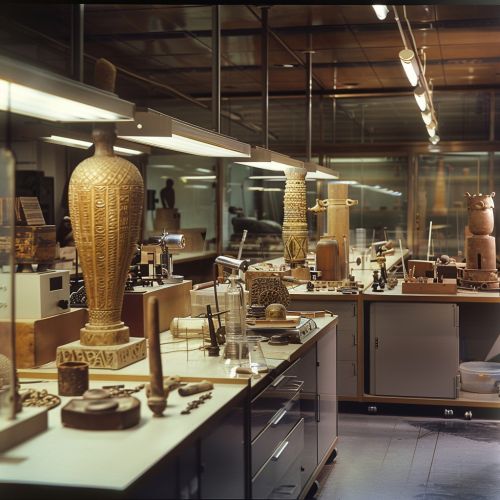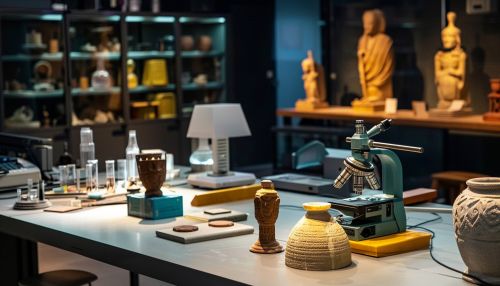Conservation Science in Cultural Heritage
Introduction
Conservation science in cultural heritage is an interdisciplinary field that applies scientific techniques to the study, preservation, and restoration of cultural heritage artifacts. This field combines elements of chemistry, biology, physics, geology, and engineering to understand the materials and processes that contribute to the degradation of cultural heritage objects, and to develop methods for their preservation and restoration.


Historical Background
The field of conservation science has its roots in the 19th century, when the first scientific analyses of cultural heritage materials were conducted. Early pioneers in the field used techniques such as microscopy and chemical analysis to study the materials and techniques used by ancient artists and craftsmen. Over time, the field has evolved to incorporate more advanced techniques, such as spectroscopy, chromatography, and radiography, as well as computational methods for data analysis and modeling.
Materials and Techniques
A key aspect of conservation science is the study of the materials and techniques used in the creation of cultural heritage objects. This can include a wide range of materials, from traditional materials such as wood, stone, metal, and textile, to more modern materials such as plastic and synthetic polymers. The study of these materials can provide valuable information about the original techniques used by the artists or craftsmen, as well as insights into the degradation processes that these objects undergo over time.
Degradation Processes
Understanding the degradation processes that affect cultural heritage objects is a critical aspect of conservation science. These processes can be physical, chemical, or biological in nature, and can be influenced by a wide range of environmental factors, such as temperature, humidity, light, and air pollution. By studying these processes, conservation scientists can develop strategies to slow down or prevent the degradation of cultural heritage objects, and to restore those that have already been damaged.
Preservation and Restoration Techniques
The ultimate goal of conservation science is to develop methods for the preservation and restoration of cultural heritage objects. This can involve a wide range of techniques, from preventive measures such as proper storage and handling, to active interventions such as cleaning, consolidation, and repair. These techniques must be carefully designed to be compatible with the original materials and techniques used in the creation of the objects, and to avoid causing further damage.
Future Directions
The field of conservation science is constantly evolving, with new techniques and technologies being developed all the time. Future directions for the field may include the development of new materials for conservation, the application of advanced imaging techniques for the study of cultural heritage objects, and the use of computational methods for the prediction of degradation processes and the design of preservation strategies.
